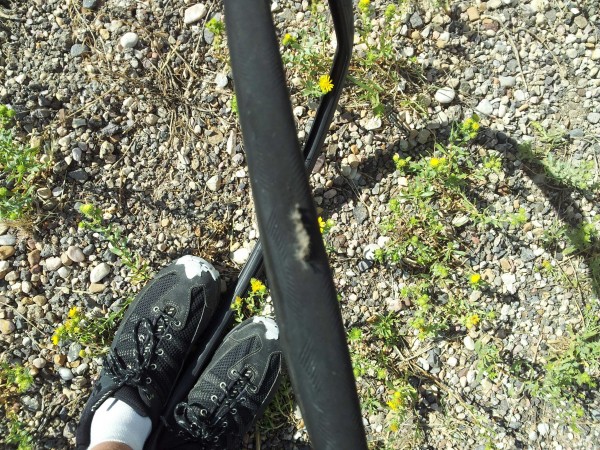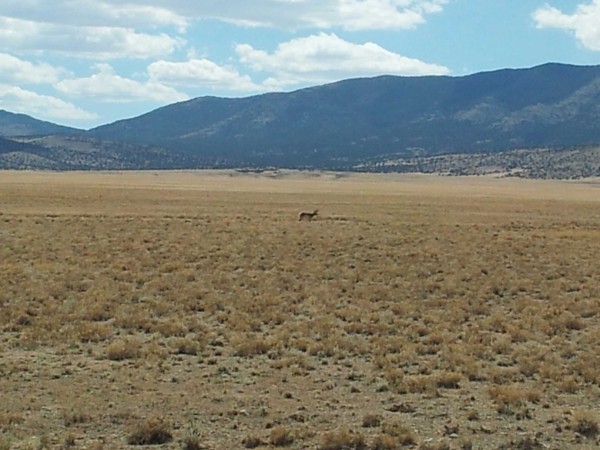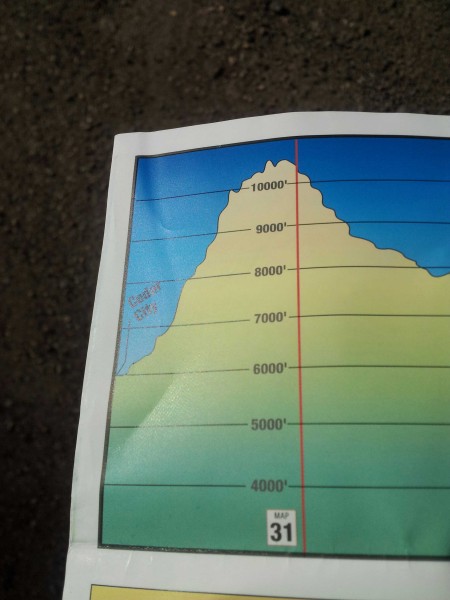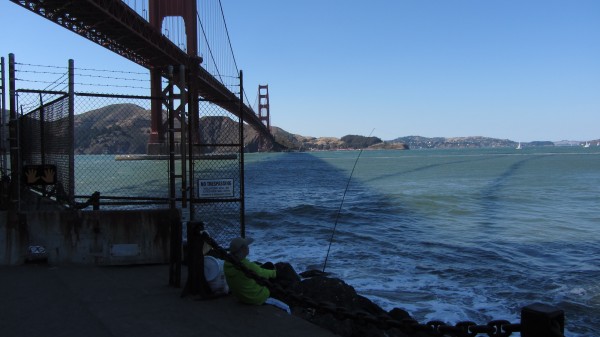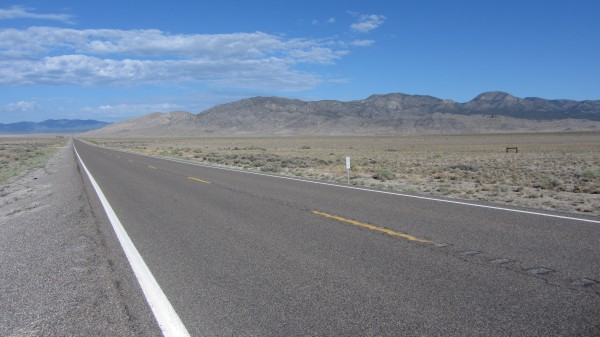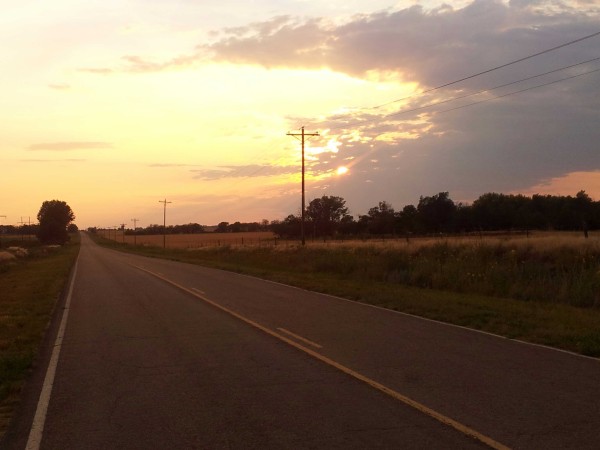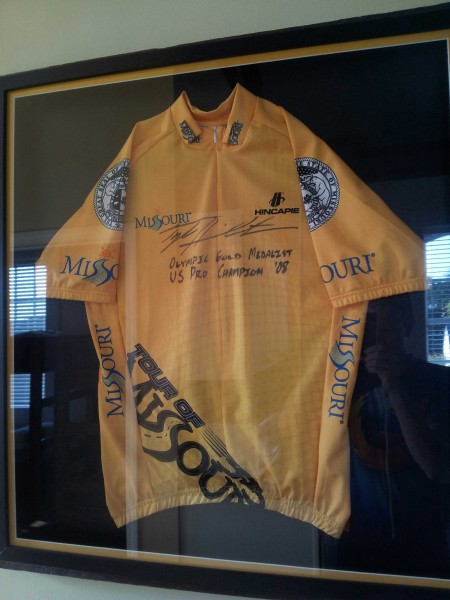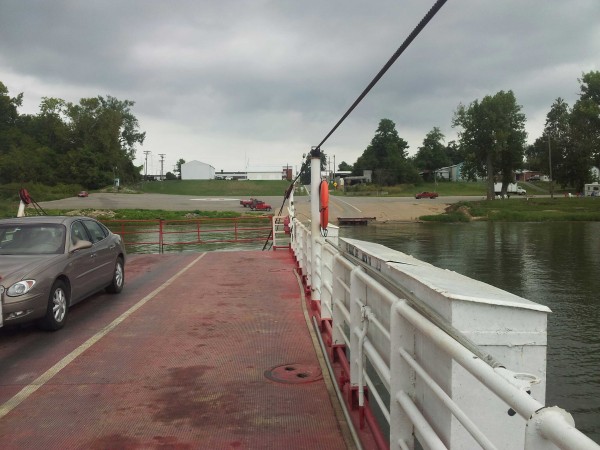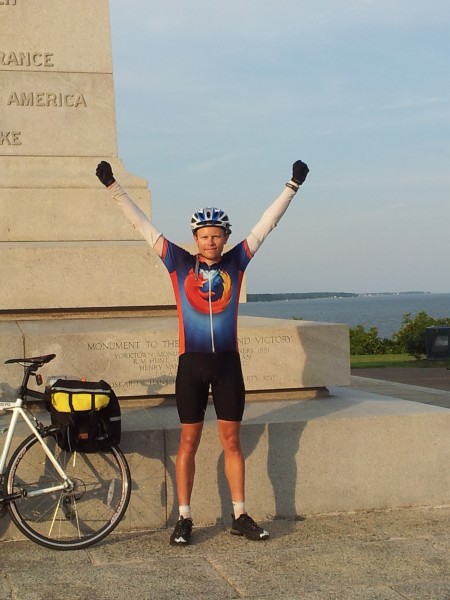This is part four of a series of posts discussing various aspects of a bike trip I did across the United States in 2012. Part one discussed the start of the trip and choosing a route. Part two discussed my daily routine and nightly shelter. Part three discussed general mileage, elevation encountered, and state-by-state scenery. This post discusses my mileage extremes, and how I dealt with water, particularly in deserts in the west.
Mileage extremes
My shortest non-starting day was 57.63mi in Utah, after the day featuring the longest waterless stretch of the trip (84mi). The motel I stayed at had a very late checkout time, and I was exhausted from the previous day (notwithstanding the multiple meals I ate as dinner at the adjacent 24-hour diner) and stayed past noon. A late-afternoon catastrophic flat cut short any thought of pushing further that day. (It would have been a bad idea anyway, as the next stretch was the 4000ft/25mi stretch in part three.)
My longest day was 161.47mi from Damascus, VA to Daleville, VA. Five days from the end, I had ~560mi to go, a reasonable closing pace. But a slow start and slowness all day for no particular reason found me only 80mi further, just outside Damascus before dinnertime. As noted earlier, I’d stayed in Damascus when hiking the Appalachian Trail, and I’d visited the town during Trail Days 2009. I had fond memories of the town and would enjoy stopping, even if it was somewhat early. So I resolved to make up the difference by starting super-early the next day. And make up, I did. From start at 0600 to 1100 in Wytheville I put in a solid 80mi. I stopped at the library to book a flight, then to eat lunch. When I looked at a map, I realized I could possibly make it to Daleville — another place I’d visited on the Appalachian Trail. I finished lunch, then hopped on the bike around 1300 and continued with only minor stops to Daleville, arriving ~21:45, to stay at the same motel I’d stayed at four years before. It was a long day, but it wasn’t as tiring as you’d think: I averaged ~15mph for ~11.5h riding, and the distance was more a matter of biking longer than of pushing harder.
Water
Many cyclists get by with water bottles. Some go further with Camelbak or other water bladders on their backs, for greater convenience and capacity. I was traveling through vast expanses of western desert: water would be a huge concern.
Before the trip I used a 100-ounce water bladder when riding. Bladders range from 30-100 ounces, making mine a bit large. But it’s just right for longer trips, such as the fifty miles from Mountain View to Santa Cruz; I usually run near empty by the end of that route. This trip, I’d face much longer distances than 50 miles between water sources, in harsher weather and terrain — several 60-75mi stretches and one 84mi stretch. Based on the Santa Cruz precedent, I bought a second (!) 100-ounce bladder for the trip.
Two bladders worked surprisingly well for all those longer distances. My first taste of empty desert was for the relatively flat fifty miles from Fallon to Middlegate Station in Nevada. As I had little idea how fast I’d consume water, I cautiously filled both bladders in Fallon. I sucked dry on the first one as Middlegate Station came into view, telling me that two ounces per mile was about right in easier desert. (I still fully filled both for the long stretches, to be safe, but I had an idea how fast I’d consume water during them.)
The longest waterless stretch was 84mi (as far as I knew — turns out there was a water hose for cyclists about halfway that I didn’t know about 🙁 ), from Baker, NV to Milford, UT. After thirty miles in the morning, I ate lunch in Baker, then left with 200oz. water on my back at around noon-ish. I did myself no favors leaving during the heat of the day, but the Baker grocery store’s opening time, and then the allure of lunch, tempted me into it. (Never underestimate what a good meal can do for energy or morale.) Very quickly I encountered the first real headwinds of the trip, sapping energy more than the heat did. But I kept biking and eating well-melted candy bars, and I kept moving. I emptied one 100oz. water bladder short of 40mi, leaving me slightly worried. But even when water’s scarce, it’s generally better to be hydrated than dehydrated, so I swapped bladders and kept drinking. Eventually I eased up on water to try to stretch it out further, but at mile 72 I sucked dry — well ahead of the distance I’d expect to ride on that water, although not horribly far for the peaks I’d climbed. But I’d successfully stretched the water to my immediate goal: the top of the last pass of the day. So I hunkered down, closed my mouth, and pedaled and coasted downhill the remaining twelve miles. I was thirsty by Milford, but not uncomfortably so: I’d survived the worst of the droughts. It was about the most comfortable way I can imagine to run out of water in the desert.
Next time, food (not that I haven’t been mentioning it every chance I’ve gotten already, I’m sure 🙂 ).
